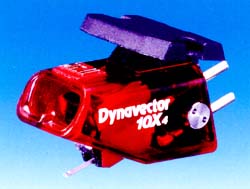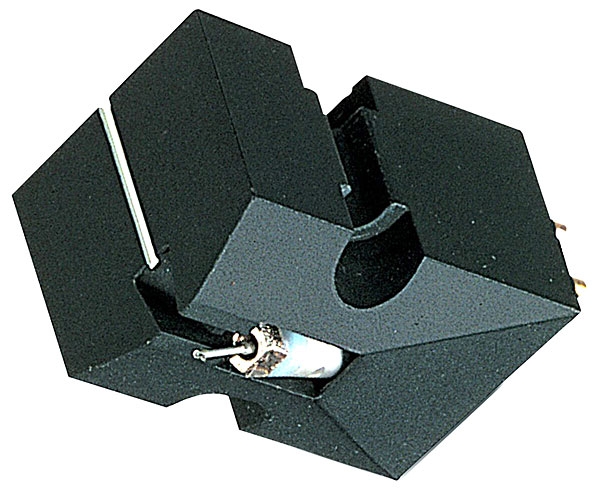It’s difficult to understand how revolutionary Goldring’s G900 series was when it debuted in the late 1970s. Here was a state-of-the-art technology that weighed a silph-like 4 grams in a world of somewhat heavy, lowish compliance cartridges. It was, for a brief period, the very essence of a modern moving magnet, as zeitgeisty as New Wave music and drainpipe trousers.
The attractive plastic-cased generator assembly produced a relatively high 4.5mV and had standard loading (47k, 150pF200pF). It has an impressively smooth frequency response of 20-20,000Hz (+/-2dB) and tracked quite well at 0.75g1.5g (around 1.5g is best). By today’s standards, end-of-side distortion was surprisingly low on all types.
The cartridge comes with a variety of stylus alternatives that could be swapped out. The 900E was a medium compliance variant with a shank attached elliptical tip. The 900SE was more compliant and had a nude mounted special elliptical. The 920IGC had a medium compliance (purple) van den Hul type 2 stylus, the 910IGC had an amber vdH type 1, and the flagship 900IGC had a VDH type 1 (with a green stylus body) and unusually high (42cu) lateral compliance.
The flagship 900IGC (Improved Groove Contact) received a lot of praise back in the day, and one listen explains why. The greatest comparison is Goldring’s own G1042 (which is essentially its replacement); the 1000 is fuller and more substantial, but the 900IGC has a charming lyricism that the later cartridge probably lacks. It has the flowing sound of only the best moving magnets, but it also has the detail of a decent moving coil. The bass is supple, quick, and lively, while the midband is broad and spacious, and the treble is light, crisp, and delicate. To fully sing, the G900IGC, like many of its low mass contemporaries, needs a relatively low mass arm, such as a SME III or Mission 774.
Goldring G900s aren’t the most popular cartridges these days, but they’re a nice little curio if you can find a good surviving copy and have the right turntable/arm combination. It was once a very unique device, noteworthy for being the first to introduce the van den Hul stylus tip to the British market, but it is still shockingly sound today.







